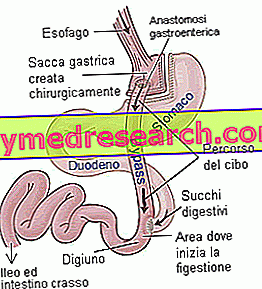Watch the video
X Watch the video on youtubeDefinition and Causes
The adipose panniculus, tissue placed anatomically under the skin, is an active reserve of energy, linked to the individual metabolism, scientifically defined caloric balance:
- when the caloric balance decreases (greater physical activity or less introduction of calories with food) the adipose reserve is reduced (lipolysis);
- when the caloric balance increases (less physical activity or excessive introduction of calories with food) fat deposition occurs (liposynthesis).
Like all tissues, even the adipose panniculus has a supporting scaffold (the reticular tissue and collagen) and a vascularization, called microcirculation; through the vascularization the adipose tissue supplies energy to the organism or accumulates it, in the form of fat.
Hormonal and vascular alterations, often aggravated by a sedentary lifestyle, stress, liver disease, improper or balanced nutrition, irregular bowel function and marked water retention, variously combined, are the causes that negatively affect adipose tissue and in particular on the microcirculation.
In these cases the fat cells break; their content, the triglycerides, spreads in the space between the cells compressing the microcirculation and preventing its correct functioning.
The persistence over time of these anatomical-metabolic alterations, produces the development of further alterations of the adipose tissue (lipodystrophy); changes that produce both an increase in the volume and consistency of the supporting tissue and a reduction in the size (by compression) and elasticity of the blood vessels in the microcirculation.
Insights on Cellulite
Physical activity and prevention Cellulite diet Defeat cellulite Cellulite and fitness, some advice Combat cellulite Cellulite, diet and physical activity Phosphatidylcholine and cellulite Cellulite and footwear Cellulite cosmetics Cellulite: natural remedies Cellulite treatments Cellulite treatments Cellulite treatments Cellulite treatmentsPhysical activity aimed at the prevention and treatment of cellulite is in many respects similar to that proposed for obese subjects.
It is inserted in a general context that foresees the improvement of the subject's psychophysical conditions and the respect of three fundamental principles:
- Regular Physical Exercise
- Healthy and balanced nutrition
- Correct Life Habits
Regular Physical Exercise
WALK, DO NOT RUN: the repeated impacts with the ground caused by the running action, in addition to having negative effects on the joints and the spine, cause micro-lacerations to the membranes of the fat cells that for a long time

This metabolite is an ally of cellulite, since the formation of muscle toxins has negative effects on the circulation and oxygenation of tissues. For this reason, two hours of spinning per week carried out at high intensity are not only useless but even counterproductive.
Maintaining the sitting position on the saddle for an hour in fact hinders the circulation of the buttocks, one of the body areas most affected by cellulite; furthermore, the high intensity of the exercise leads to the accumulation of lactic acid with all the negative consequences just seen.
It is therefore recommended to carry out long-term activities such as cycling, brisk walking or step. The benefits of this training program are many: a regular physical activity (at least 30-40 minutes a day) leads to a general improvement in cardio-circulatory and respiratory capacities, favoring peripheral circulation.
In this way it is possible to defeat the bad circulation which represents the biggest risk factor for the development of cellulite.
To be called regular physical activity must be carried out at least three days a week.
Finally, it may be useful to follow a general toning program that includes the use of naturally charged exercises, isotonic equipment or free weights depending on the subject's experience and preferences. Even in these cases it is important not to overdo it, using light loads for a number of repetitions that, although high, do not excessively strain the muscle.
At the end of the session, stretching combined with respiratory control exercises performed with the legs up high, favors venous return and elimination of the toxins produced.
Additional Advice
Cellulite mainly affects certain regions of the body such as the thighs, buttocks and hips, but also arms and back. It is therefore advisable to add specific exercises to stimulate the areas where there is a more localized adiposity, alongside a constant generalized exercise (walking, recline, step or cross-country ski simulators).
It is also important to carry out some exercises at the end of each training session to stimulate the mobility of the foot.
A defect in plantar support can be one of the biggest risk factors for the development of cellulite. The foot is in fact the seat of delicate vascular systems (triangle of the vault and venous insole of Lejaris) responsible for venous return. These balances can be altered by incorrect postures or by the frequent use of non-anatomical footwear (high heels).

Healthy nutrition
To learn more: Anticellulite Diet
SOME TIPS: To combat cellulite it is essential to associate an equally adequate diet with a regular physical activity program.

Water consumption is very important because it allows the optimal elimination of toxic substances and waste, drink a lot and do not forget to bring a bottle of water always with you, especially when you go to the gym. It is advisable to purchase water low in sodium to promote diuresis.

Correct Life Habits
THE REST FIRST OF ALL: it is very important to sleep for at least 8 hours a day and try to reduce stress as much as possible. The mental approach with which the food and sports program is started is fundamental, "serenity and motivation" above all.



